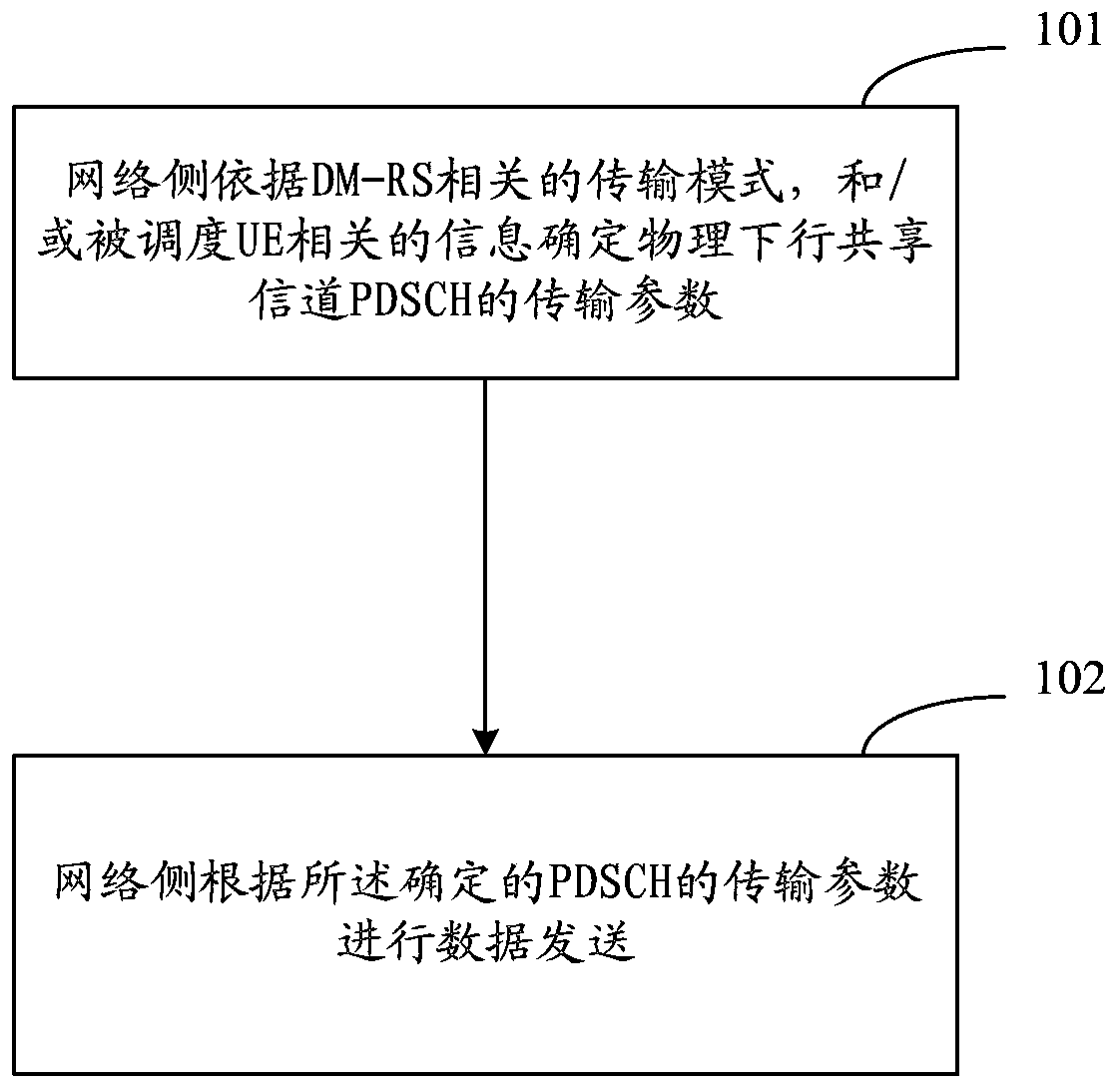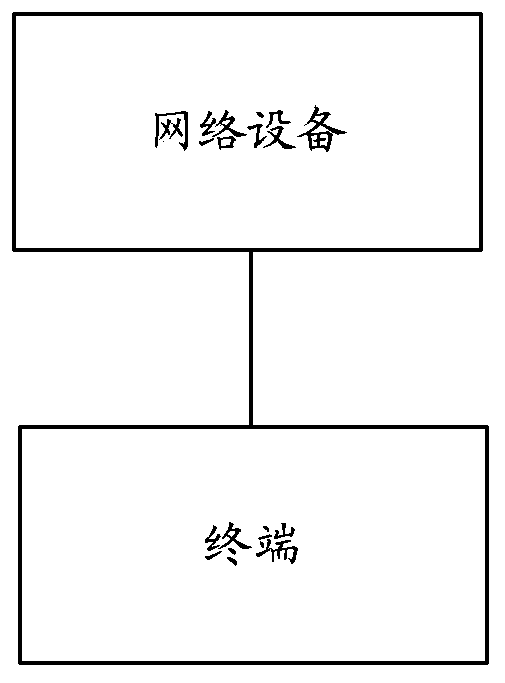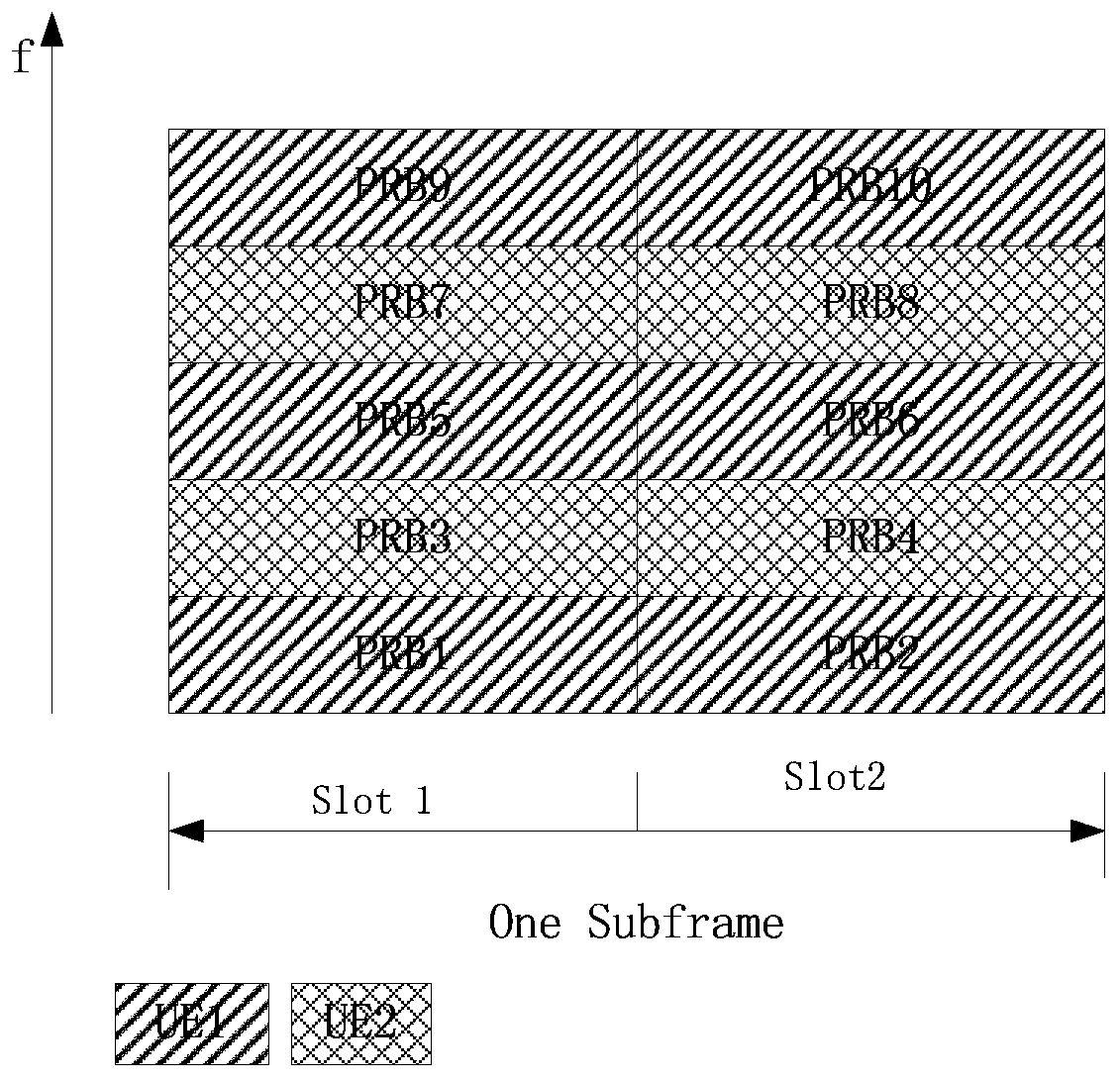A transmission method and system for a physical downlink shared channel
A technology of physical downlink sharing and transmission method, applied in the field of transmission method and system of physical downlink shared channel, and can solve the problems of increasing MU-MIMO multiplexing capacity and the like
- Summary
- Abstract
- Description
- Claims
- Application Information
AI Technical Summary
Problems solved by technology
Method used
Image
Examples
Embodiment 1
[0175] The UE uses the newly added carrier to transmit data, and the transmitted data corresponds to a single transmission block. For single DM-RS antenna port transmission, the antenna port of the PDSCH corresponding to DCI Format 1A is implicitly determined through the antenna port of the ePDCCH, ePDCCH and the corresponding scheduled PDSCH Use the same X value and SCID value. If the UE's ePDCCH is scheduled to be transmitted on antenna port 9, the UE's data is transmitted on the PDSCH on antenna port 9 by default. Here, antenna port 9 is used as an example. If other antenna ports are used, it can be deduced by analogy. Here, the downlink control information format takes DCI Format 1A as an example, and the newly added DCI Format 1E or DCI Format 1F is also applicable to this embodiment.
Embodiment 2
[0177] The UE uses the new carrier to transmit data. The transmitted data corresponds to a single transmission block. The PDSCH resources used by the UE are scheduled through DCI Format 1A. The single DM-RS antenna port for the UE to transmit data is implicitly determined by the UE ID or C-RNTI. If There are two optional antenna ports, then determine the antenna port used by the UE according to (UE ID / C-RNTI) Mod2 equal to 0 or equal to 1; if there are four optional antenna ports, then according to (UE ID / C-RNTI) The result of RNTI) Mod4 is equal to 0, or equal to 1, or equal to 2, and the latter is equal to 3 to determine the antenna port used by the UE. Here, the downlink control information format takes DCI Format 1A as an example, and the newly added DCI Format 1E or DCI Format 1F is also applicable to this embodiment.
Embodiment 3
[0179] The UE uses the new carrier to transmit data, and the transmitted data corresponds to a single transmission block. The PDSCH resource used by the UE is scheduled through DCI Format 1A, and the single DM-RS antenna port for the UE to transmit data is implicitly determined by the subframe type. Assuming that the TDD special subframe DwPTS adopts Normal CP, the new special subframe is configured as (DwPTS:GP:UpPTS)=(6:6:2), and supports DM-RS antenna ports 7-10 at this time; assuming the TDD special subframe Frame DwPTS adopts Extended CP, and the new special subframe configuration is (DwPTS:GP:UpPTS)=(5:5:2), and antenna port 5 is supported at this time; assuming that the subframe type is MBSFN subframe at this time, DM is supported - RS antenna port 7; assume that the subframe type is a general subframe at this time, and a single antenna port is fixed, such as 7, where the default SCID is 0, and the default X is x(0). Here, the downlink control information format takes D...
PUM
 Login to View More
Login to View More Abstract
Description
Claims
Application Information
 Login to View More
Login to View More - R&D
- Intellectual Property
- Life Sciences
- Materials
- Tech Scout
- Unparalleled Data Quality
- Higher Quality Content
- 60% Fewer Hallucinations
Browse by: Latest US Patents, China's latest patents, Technical Efficacy Thesaurus, Application Domain, Technology Topic, Popular Technical Reports.
© 2025 PatSnap. All rights reserved.Legal|Privacy policy|Modern Slavery Act Transparency Statement|Sitemap|About US| Contact US: help@patsnap.com



